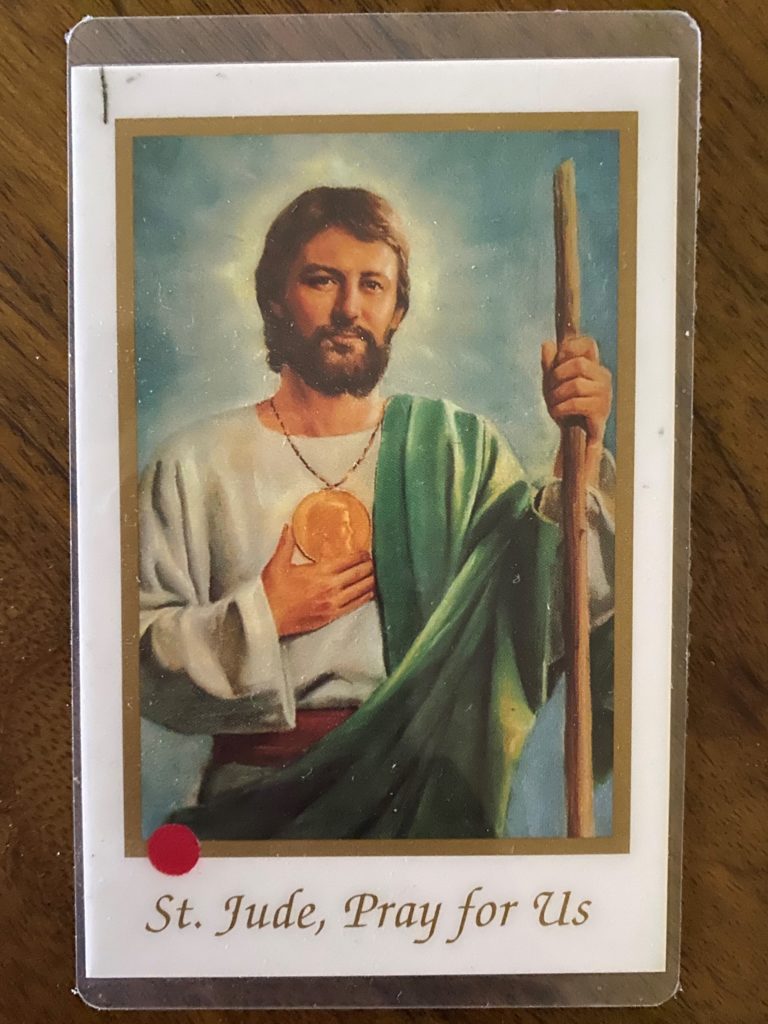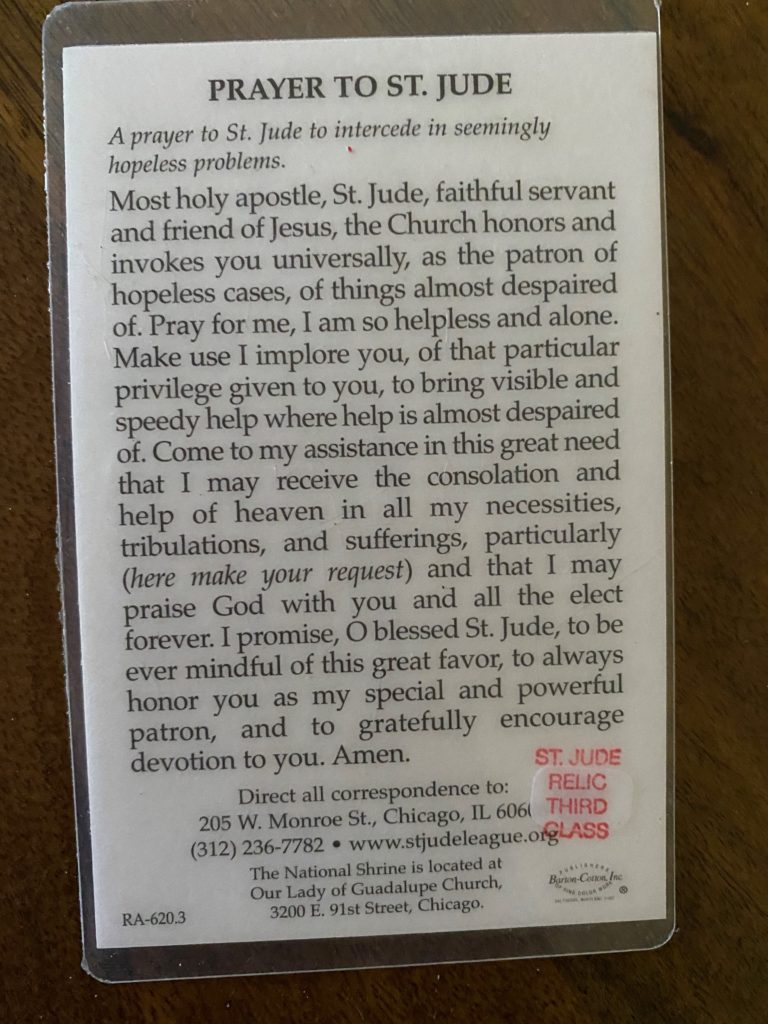If scholars define Catholicism by its sacramentality, its commitment to an embodied encounter with the divine in real time, what even is Catholicism in an age of social distance during a global pandemic? This question emerged this semester as I’ve tried to teach Catholicism in America in the weird approximation of a classroom that is the masked, six-feet-of-separation seminar. One of the true joys of teaching, for me, is inviting students to explore strange new worlds, introducing them to human (and nonhuman) lives they can hardly fathom. Emma Anderson’s magnificent book The Death and Afterlife of the North American Martyrs represented my first attempt to do this once we returned to in-person instruction.
French Jesuits yearned for martyrdom in the lands of the Haudenosaunee (Iroquois) and Wyandot (Huron-Wendat) in the seventeenth-century. As missionaries’ confidence in converting Native peoples waned, Jesuits like Jean de Brébeuf hoped to Christianize what they took to be “New France” by watering the ground with their own blood. Sanctification of their own suffering produced what we could call preemptive relics. “Brébeuf’s behavior during the 1640s so convinced his community that he was destined for a martyr’s death,” Anderson writes, “that, concerned that his body might be destroyed, his colleagues persuaded him to donate a vial of his blood while he yet lived, that they might revere it as a relic in such an eventuality.” Brébeuf got what he wished. Bits of his body later circulated in Catholic New France.
How does one think about the religious circulation of bodily fluid in the midst of a pandemic? When I read that sentence about preemptively preserving blood for veneration, I knew I had to bring some thing into our classroom. Something touchable. I wanted to dwell on the visceral embodiment of this seventeenth-century Catholic conception of the cosmos.

I grabbed holy cards from my office bookshelf—St. Jude, the Patron Saint of Hopeless Causes, seemed apt for our times. Like many holy cards, these had relics embedded in them. I ran through the distinctions between first-, second-, and third-class relics in my head as I hustled to class. But then I stopped dead. It hit me. I couldn’t pass these around the room. I couldn’t invite students to “gather close and look” either, for fear of contamination and contagion. And so, on the day I’d hoped to bring to life the ways material objects are often, for Catholics, charged with a sacred power that can be passed from person to person, instead, I placed two laminated holy cards and a cylinder of anti-bacterial wipes on a desk in the middle of the room. No one left their sanitized seats to look at (let alone touch) them.

This story seems fitting for thinking through the impact of Covid-19 on Catholic communities. After all, scholars often distinguish Catholicism from other modes of Christian living by stressing the Catholic conception of the world as charged with divine presence. This sacramental sensibility—wherein objects, human bodies, and nonhuman entities are understood to mediate the sacred in ways that can be seen, smelled, touched, and tasted—is what can lead to a preponderance of stuff in Catholic spaces. “Catholics live in an enchanted world,” as the late sociologist and priest Andrew Greeley put it, “a world of statues and holy water, stained glass and votive candles, saints and religious medals, rosary beads and holy pictures.”
Perhaps the most dramatic example of divine presence is also the most mundane. For Catholics, the ritual reenactment of Jesus’s last supper is no symbolic gesture. When priests celebrate the Eucharist each Sunday, Jesus Christ becomes physically present in church. When the words are spoken—“this is my body, this is my blood”—God is manifest. Then God is consumed, literally. Catholics process to the altar, where they eat and drink Christ’s flesh and blood (even if it still looks and tastes like bread and wine). Or, at least, Catholics did this when they could still congregate in person. Beyond the dangers of the viral loads released by hymn-singing and handholding, eating poses particular problems in a pandemic regardless of the relative divinity of the food.
This way of being religious has been perceived as a problem for quite some time, though. The idea that one can and should consume God, physically, has divided Christians for centuries. It also runs counter to the modern category of “religion.” As Robert Orsi argues in History and Presence, conflicting conceptions of the ontological presence (or absence) of gods in the world shaped the concomitant rise of the study of religion and the secular modern state. Presence “contravened ordinary human experience,” he notes. “It was inconsistent with new scientific knowledge in various fields of inquiry. It was inconsistent with modern epistemologies.”
This is secularism at work, “the regime that determines what does and does not count as appropriate religion for a particular sphere” as Vincent Lloyd defines it. It is the regime that determines the sort of blood that can be venerated, the sort of food that can be ritually consumed. Catholics engage in all sorts of activities that my students would not count as appropriate religion precisely because these sorts of embodied habits exceed the bounds of “sincere belief,” which most of my students presume real religion to be really about. Students arrive at these assumptions honestly. Regardless of their relative religiosity, they tend to be good secular moderns. They have, as Lloyd would put it, come of age in “a religious domain that is managed by power and that is circumscribed by nonreligious forces.”
It does not stretch the imagination too far, in these circumstances, to think Covid-19 might propel attempts to manage Catholic presence. Not in the sense that the Eucharist would somehow, conspiratorially, be put on perpetual hold. But that, with communal consumption of Christ’s body and blood paused, some might take this as an opportunity to return religion to what they take to be its rightful place. And so, let us return to our opening question. If scholars define Catholicism by its sacramentality, what even is it in the midst of a global pandemic?
With churches emptied and Catholics receiving sacraments via Zoom, perhaps all that remains is sincere belief. There is a metaphor in the middle of my classroom, somewhere between St. Jude’s third-class relics and a cylinder of Clorox wipes. Religion isn’t really about touching and tasting, students might say, but about the meaning (moral, symbolic) extrapolated from it. This is certainly the case for some Catholics who are appalled at correligionists anxious to return to in-person worship and disturbed by the theological implications that drive them there. Surely this is not what true Catholicism—what real religion—is meant to be about, they might say.
But, to frame our question differently, perhaps we should ask what the pandemic reveals to us about Catholicism. A great many things, to be sure. But one thing is clear: For many white Catholics in the United States, racism is what remains when the tradition is shorn of presence. As I have argued in a study of white Catholic massive resistance to desegregation, historically speaking, white people frequently deploy “Catholic” as a racial category and assume that to be a “real good and sincere Catholic” is to be a white one. This manifested in that very same visceral presence of the Eucharist mentioned above. In 1966, one Catholic Chicagoan declared “I go to communion almost every morning. But I will not attend Mass with any Negroes.” And in 2020, theologian Kim Harris writes that Black Catholics remain unwelcomed in the non-Black congregations where most of them worship.
The racialization of white Catholicism is revealed, too, in the rush to return to receive Christ’s body and blood. The Diocese of Brooklyn has filed suit against the state of New York, claiming that their free exercise rights have been violated by laws limiting church capacity. Archbishop Salvatore Joseph Cordileone led a “Free the Mass” march in San Francisco. Meanwhile, Black, Latinx, and Native American communities, some of them Catholic, continue to suffer and die of the virus at disproportionate rates. Thus, we witness white Catholics deploy secularist logics of religious freedom to defend their right to consume God with no regard for the communities of color their actions affect.
If my students’ aversion to touch holy cards represents one religious response to the pandemic, white Catholics’ rush to reopen churches reveals another. As Lloyd reminds us, “studying the management or exclusion of religion without also studying the management or exclusion of race captures a symptom and conceals a disease.” Or, to put it more plainly, let us turn to the words of Deacon Albert A. Anderson, Jr., a Black Catholic quoted in a local publication one week after a white police officer asphyxiated George Floyd. “There’s a disease in this country that’s more deadly than the coronavirus can ever be,” he said. “Until the reality of this systemic racism is addressed, it’s never going to change.”
The same social and physical formation that makes God and saints really present for people is implicated, for white Catholics, in their racialization as white. The sacramentality that distinguishes one way of being Christian from another cannot be easily disentangled from the violence that led Black Catholics in 1968 to declare the US Church “a white racist institution.” And, in the end, the blood of Jean de Brébeuf sanctified colonialist violence against Native peoples as Catholics christened their “new world” America.
The connection between Brébeuf’s blood and the blood of the Eucharist may be clear, but both are also bound up with the “blood” of race that remains foundational to logics of the white supremacist, settler colonial secular state. So, as we ponder the religious circulation of bodily fluid amidst a pandemic, we should consider how the racial disparities unveiled by Covid-19 connect to the religious disparities evident in calls to return to “normal.” The current crisis illuminates some distinctive elements about Catholic ways of being Christian. I would argue that the uprisings against injustice these viruses unleashed reveal (once again) the racialization of white Catholicism.
Thanks to Mike Pasquier, Katie Holscher, Jack Downey, and Mona Oraby for comments on earlier drafts of this essay.












